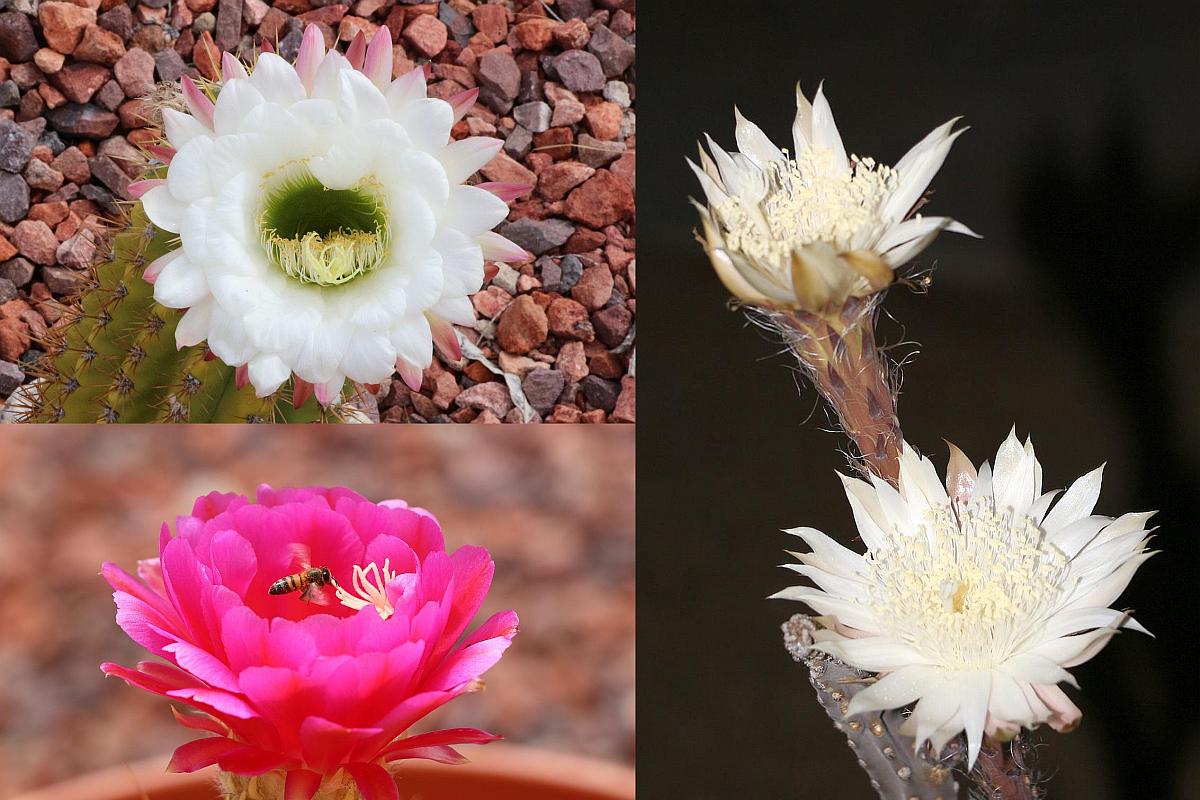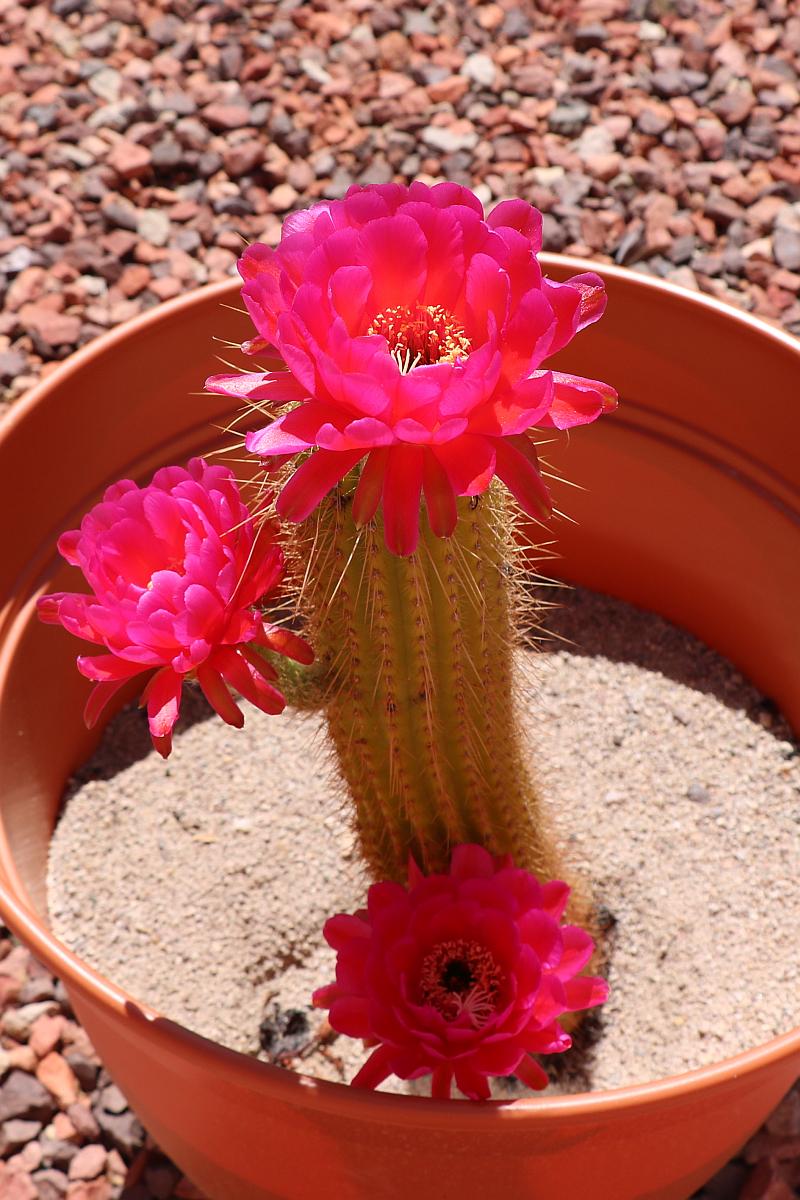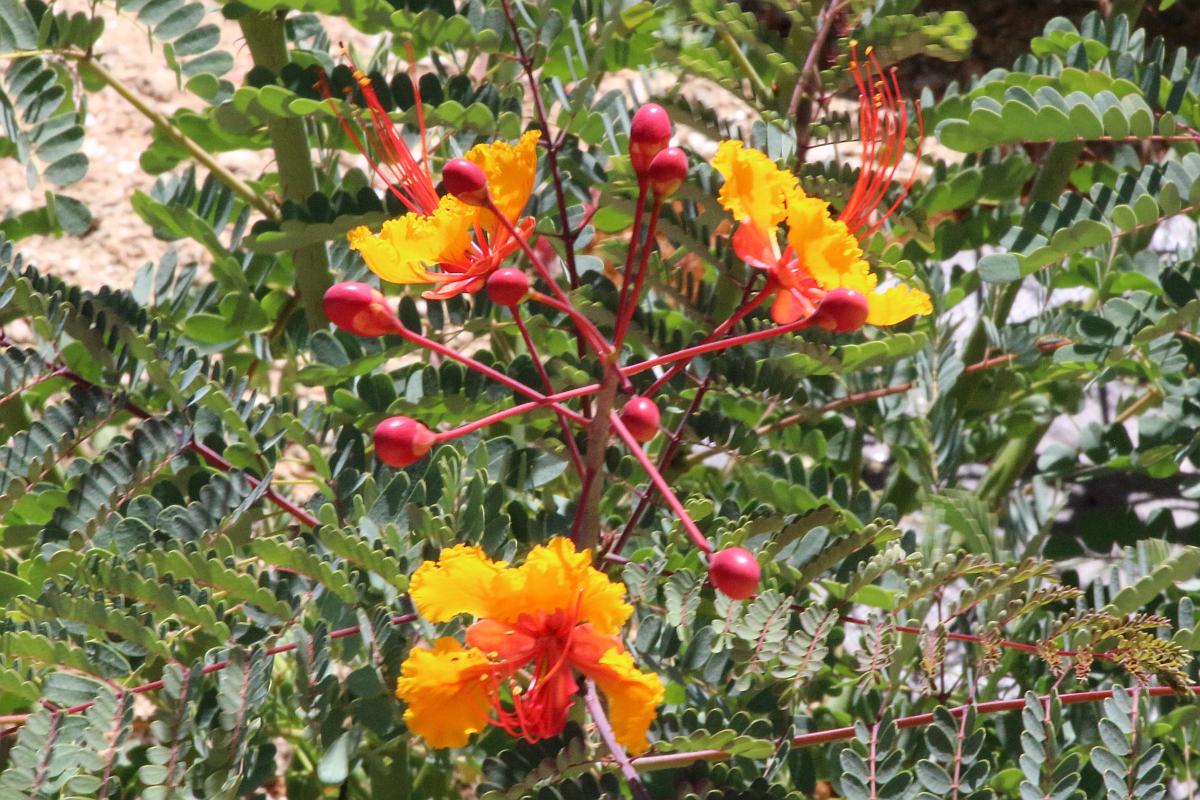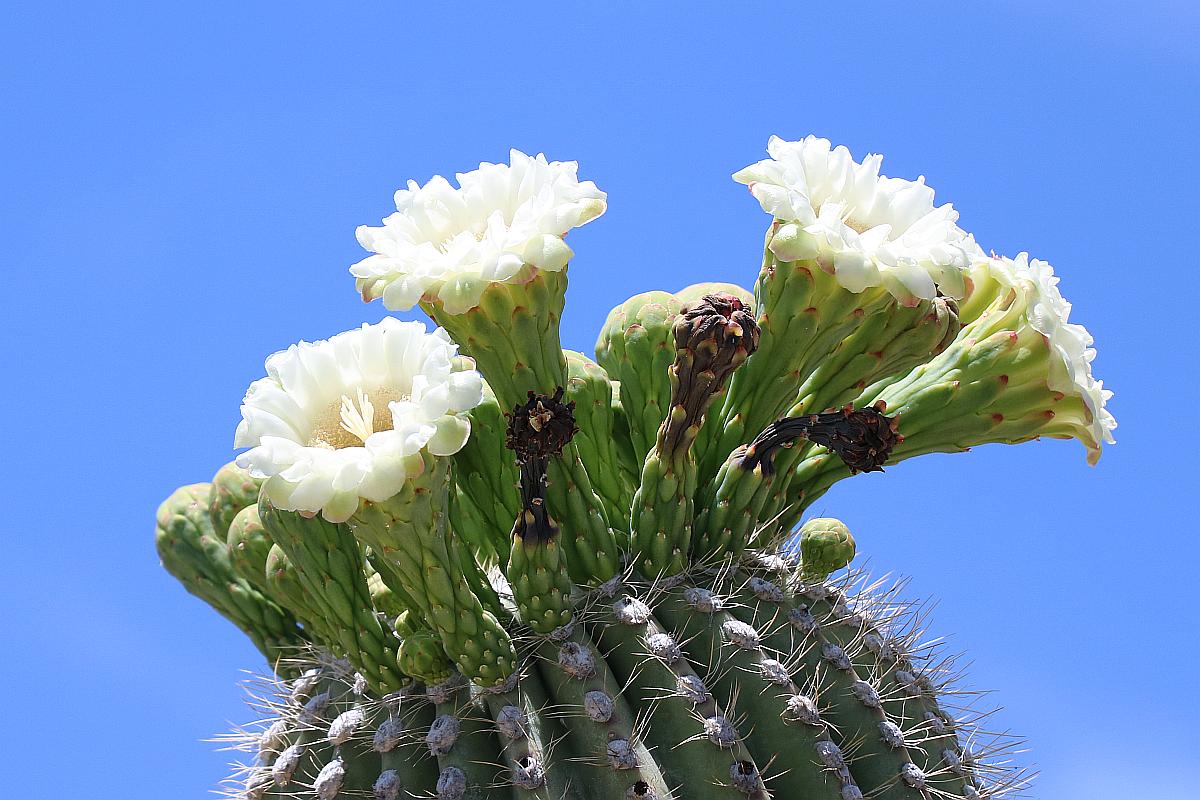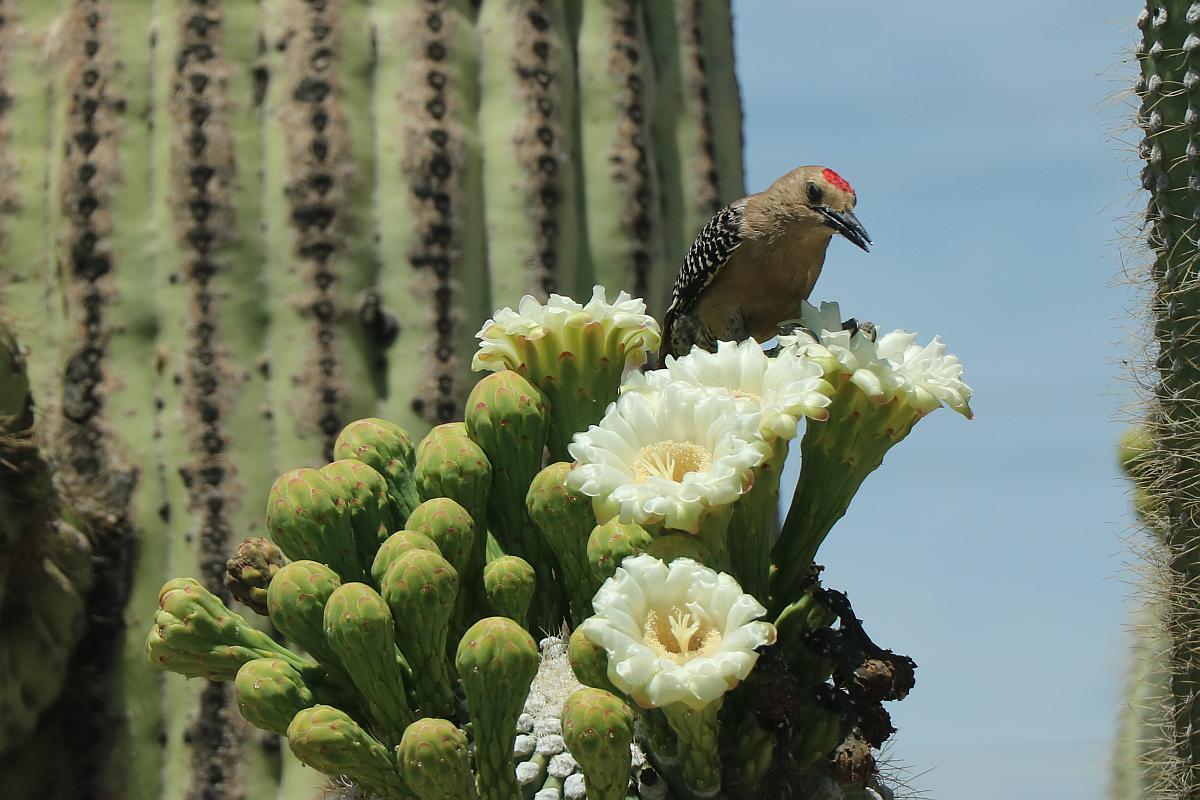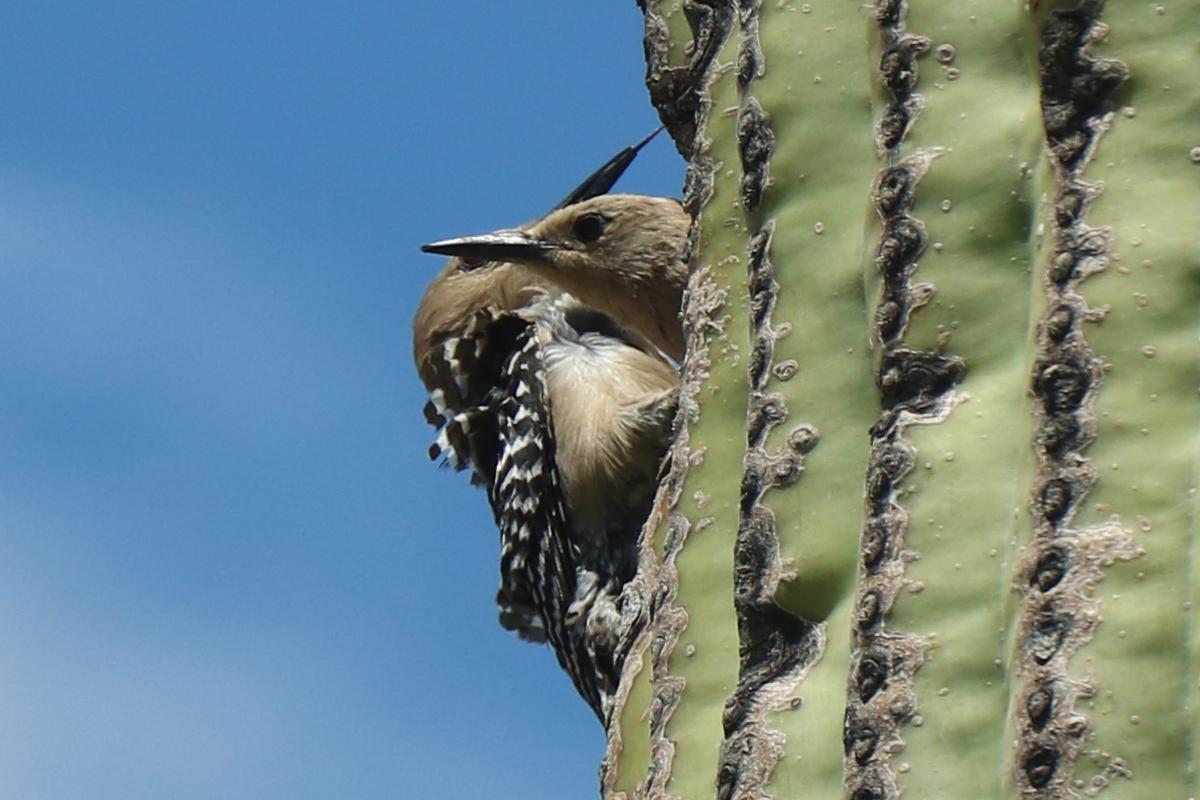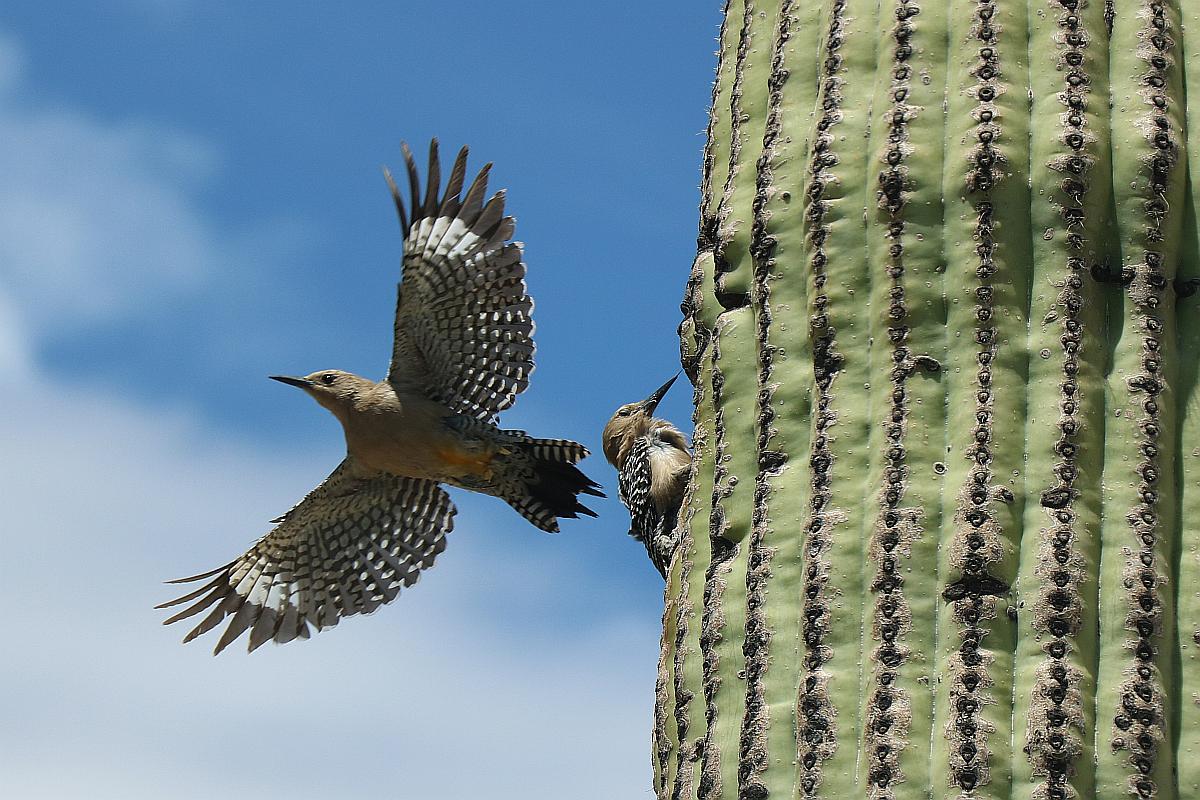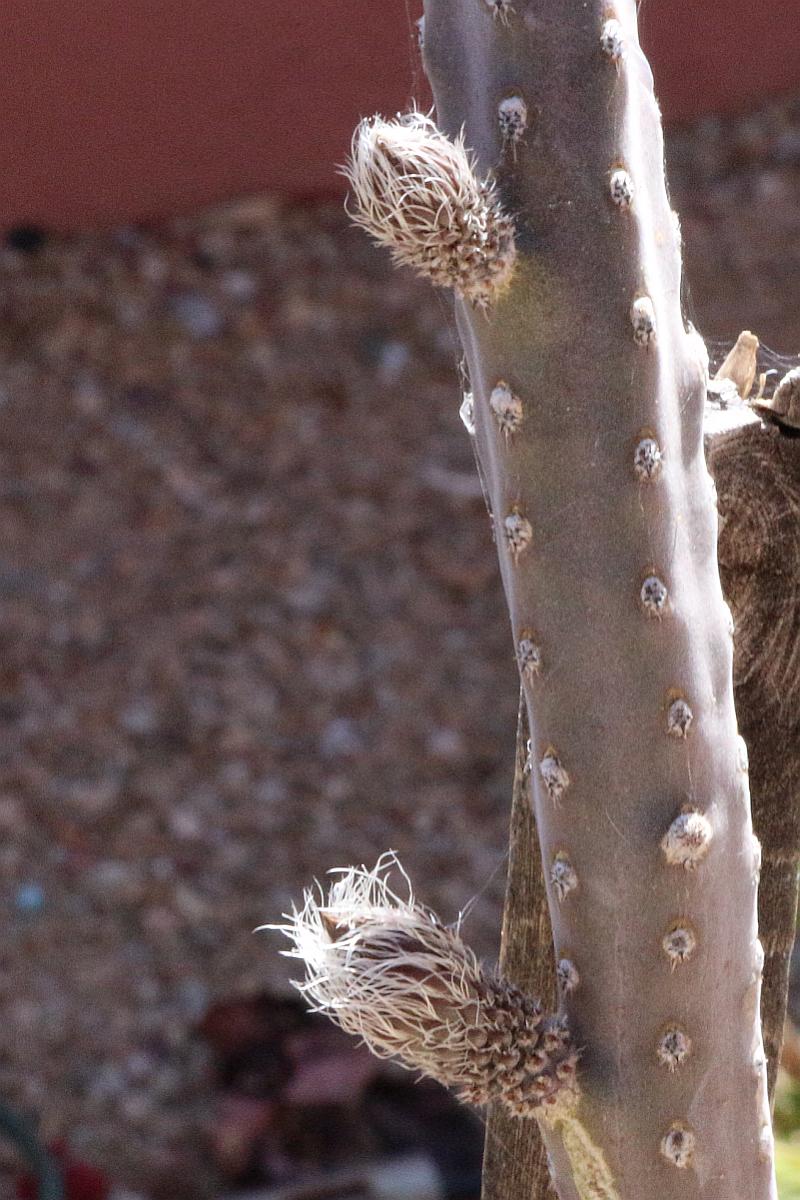 The Queen of the Night cactus (peniocereus greggii) cutting we rescued from up on the hill several years ago is showing a couple of flower buds. This cactus was brought down after a palo verde branch collapsed in a wind and rain storm back then. Damsel put it in a pot and has nurtured it in the courtyard with weekly waterings since that time.
The Queen of the Night cactus (peniocereus greggii) cutting we rescued from up on the hill several years ago is showing a couple of flower buds. This cactus was brought down after a palo verde branch collapsed in a wind and rain storm back then. Damsel put it in a pot and has nurtured it in the courtyard with weekly waterings since that time.
A couple of years ago, the cutting sprouted a new branch which is where the new flower buds are located. That branch and the main stalk have both shown little buds over the past couple of years that never amounted to much. Now, it seems, we have a good thing going. Click on the image to enlarge.
This will be, if all goes well, the first year that these beautiful flowers will bloom in the courtyard. Having them that close is to our great advantage since when they bloom at night we won’t have to go out into the dark (it is very dark here at night) to see, smell and photograph the flowers.
We have summertime plans to get in the RV and head to Colorado and whatever sightseeing we can do along the way, but that might have to be postponed until we see our little courtyard flowers blooming. It’s a good thing we don’t have too many constraints on our ability to flex our plans as we see fit these days.

